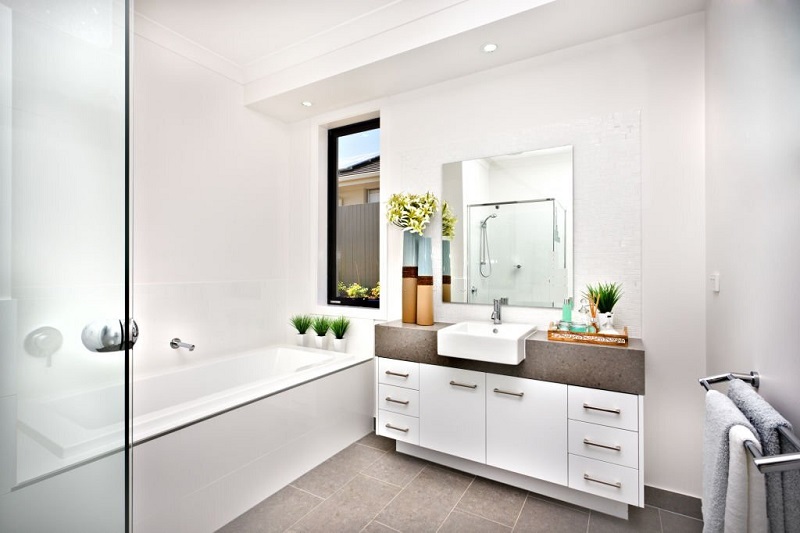The kitchen sink is one of the most essential and frequently used features in any home. It serves as a focal point, a workstation, and a place to rinse, wash, and prepare food. With so many options available in the market, choosing the perfect kitchen sink for your home can be a daunting task. This comprehensive guide will help you navigate the world of kitchen sinks, providing you with the information you need to make an informed decision based on your specific needs and preferences. From sink size and configuration to faucets and accessories, we will cover all aspects of selecting the perfect kitchen sink for your home.
 |
| Kitchen Sink |
Sink Size and Configuration
When it comes to selecting the perfect kitchen sink for your home, size and configuration are two key factors to consider. The size of your sink should be determined by the available space in your kitchen and your specific needs. Here are some factors to consider when choosing the right size and configuration for your kitchen sink:
Countertop space:
Measure the available space on your countertop to determine the maximum sink size that can be accommodated. Keep in mind that you should also leave some space for other kitchen essentials like a cutting board or drying rack.
Single or double bowl:
Single bowl sinks are ideal for smaller kitchens, while double bowl sinks are perfect for larger kitchens or those who frequently cook and entertain. Double bowl sinks offer more versatility, allowing you to use one side for washing dishes and the other for food preparation.
Depth:
The depth of your sink is another important consideration. Deeper sinks can accommodate larger pots and pans, but they may also require more bending and reaching, which can be uncomfortable for some users. Consider your comfort and the types of dishes you typically wash when deciding on sink depth.
Configuration:
There are various sink configurations available, such as top-mount, under-mount, and farmhouse sinks. Each configuration has its pros and cons, so consider your kitchen design and personal preferences when choosing a sink configuration.
Material Options
The material of your kitchen sink plays a crucial role in its durability, appearance, and maintenance requirements. Here are some popular material options to consider when selecting the perfect kitchen sink for your home:
Stainless steel:
Stainless steel sinks are durable, easy to clean, and resistant to stains and scratches. They are available in various finishes and styles, making them a versatile choice for any kitchen design.
Cast iron:
Cast iron sinks are known for their durability and classic appearance. They are coated with a layer of porcelain enamel, which provides a smooth and easy-to-clean surface. However, cast iron sinks can be quite heavy and may require additional support during installation.
Granite composite:
Granite composite sinks are made from a blend of natural granite and acrylic resin, providing a durable and low-maintenance option. They are resistant to stains, scratches, and heat, and are available in various colors and styles.
Fireclay:
Fireclay sinks are made from clay that is fired at high temperatures, resulting in a durable and non-porous surface. They are known for their timeless and classic appearance, making them a popular choice for farmhouse-style kitchens.
 |
| Kitchen Sink |
Faucets and Accessories
The perfect kitchen sink is not complete without the right faucet and accessories. Here are some factors to consider when selecting faucets and accessories for your kitchen sink:
Faucet style:
Choose a faucet style that complements your kitchen design and sink material. Popular faucet styles include pull-down, pull-out, and single-handle faucets.
Faucet finish:
The finish of your faucet should match or complement the finish of your sink and other kitchen fixtures. Some popular faucet finishes include chrome, stainless steel, and oil-rubbed bronze.
Accessories:
Consider adding accessories such as a soap dispenser, cutting board, or colander to enhance the functionality of your kitchen sink. Make sure to choose accessories that are compatible with your sink size and configuration.
Installation and Maintenance
Proper installation and maintenance are crucial for ensuring the longevity and performance of your kitchen sink. Here are some factors to consider when it comes to installation and maintenance:
Professional installation:
While some homeowners may choose to install their kitchen sink themselves, it is recommended to hire a professional plumber to ensure proper installation and avoid potential issues down the line.
Maintenance requirements:
Different sink materials and finishes may require different maintenance routines. For example, stainless steel sinks may require regular polishing to maintain their appearance, while cast iron sinks may need occasional resealing to prevent rust and staining.
Warranty:
When selecting a kitchen sink, look for a product that comes with a warranty to protect your investment in case of any defects or issues.
Conclusion
Selecting the perfect kitchen sink for your home is a crucial decision that requires careful consideration of various factors, such as size, configuration, material, faucets, and accessories. By taking the time to research and evaluate your options, you can find a kitchen sink that not only meets your specific needs and preferences but also enhances the overall functionality and appearance of your kitchen. With the right sink in place, you can enjoy a more efficient and enjoyable cooking and cleaning experience for years to come.


























